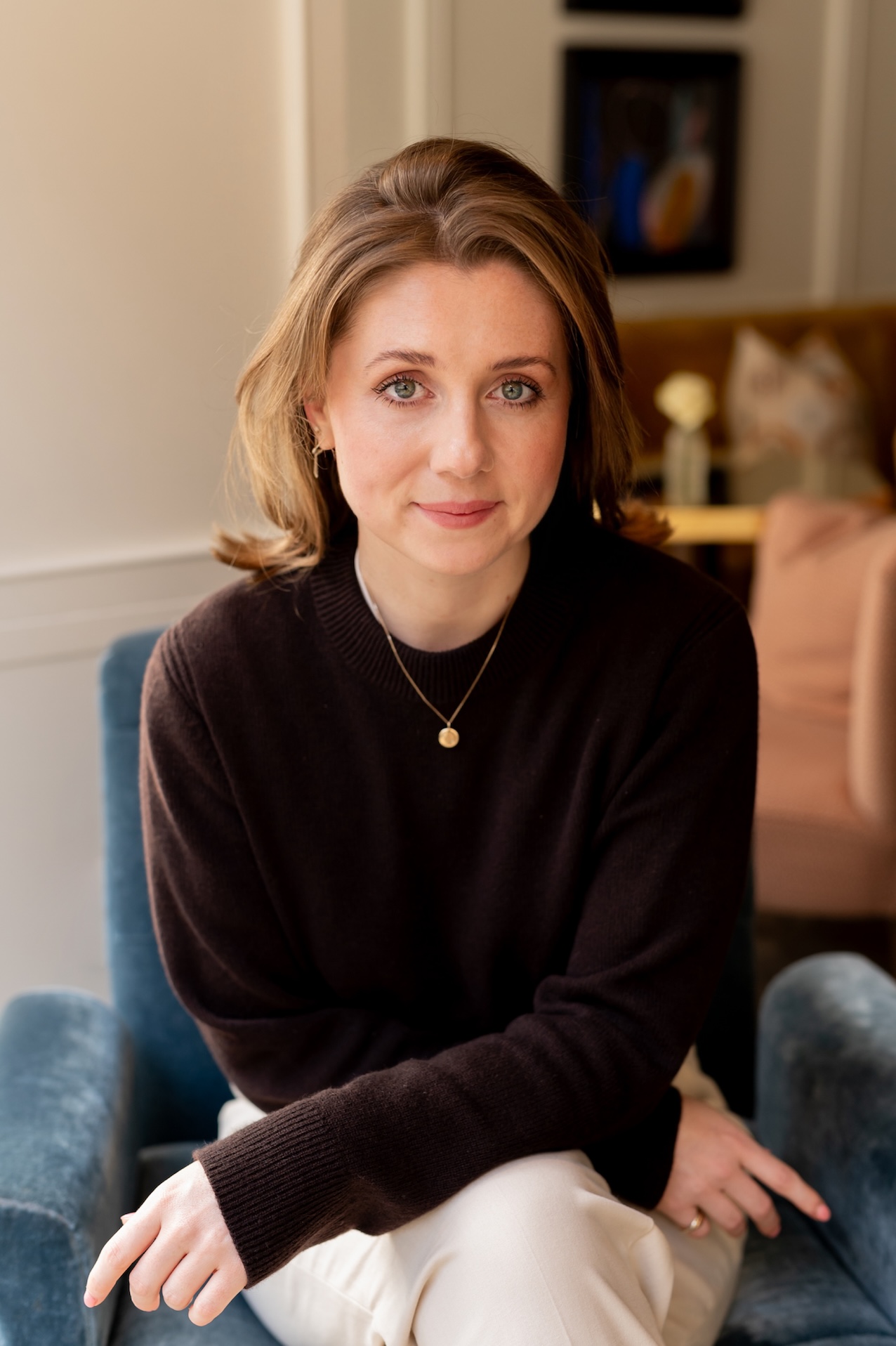St Barts: Why there's so much more to this tiny Caribbean island than meets the eye
In recent years, the island of St Barts has had to deal with a category-five storm, a pandemic and endless tabloid headlines, but it’s now back in business and better than ever, says Travel Editor Rosie Paterson.


The approach to St Barts from the air is not for the timorous, with the tiny silver Tradewind aircraft dropping from the sky in front of the Eden Rock hotel, bohemian Gyp Sea Beach Club busy Saint-Jean beach, banking steeply, wing tip almost touching turquoise water, before coming to a pulse-racing halt in front of an ominous slab of rock at the end of the runway. It might not be the glamorous arrival you tally with this fabled Caribbean isle, but little about St Barts — or Barth or Barths or St Barthelemy depending on whether you’re British, American, French or Swedish — ever really adheres to expectations.
Plenty are put off visiting by the crowds, celebrities and paparazzi that descend over Christmas and New Year, but talk to anyone in the know and they’ll tell you that, if you travel at any other time (most recommend the end of January onwards), you’ll discover a quieter, wilder paradise. This is a place that those people in the know talk about with misty, wide-eyed reverence.
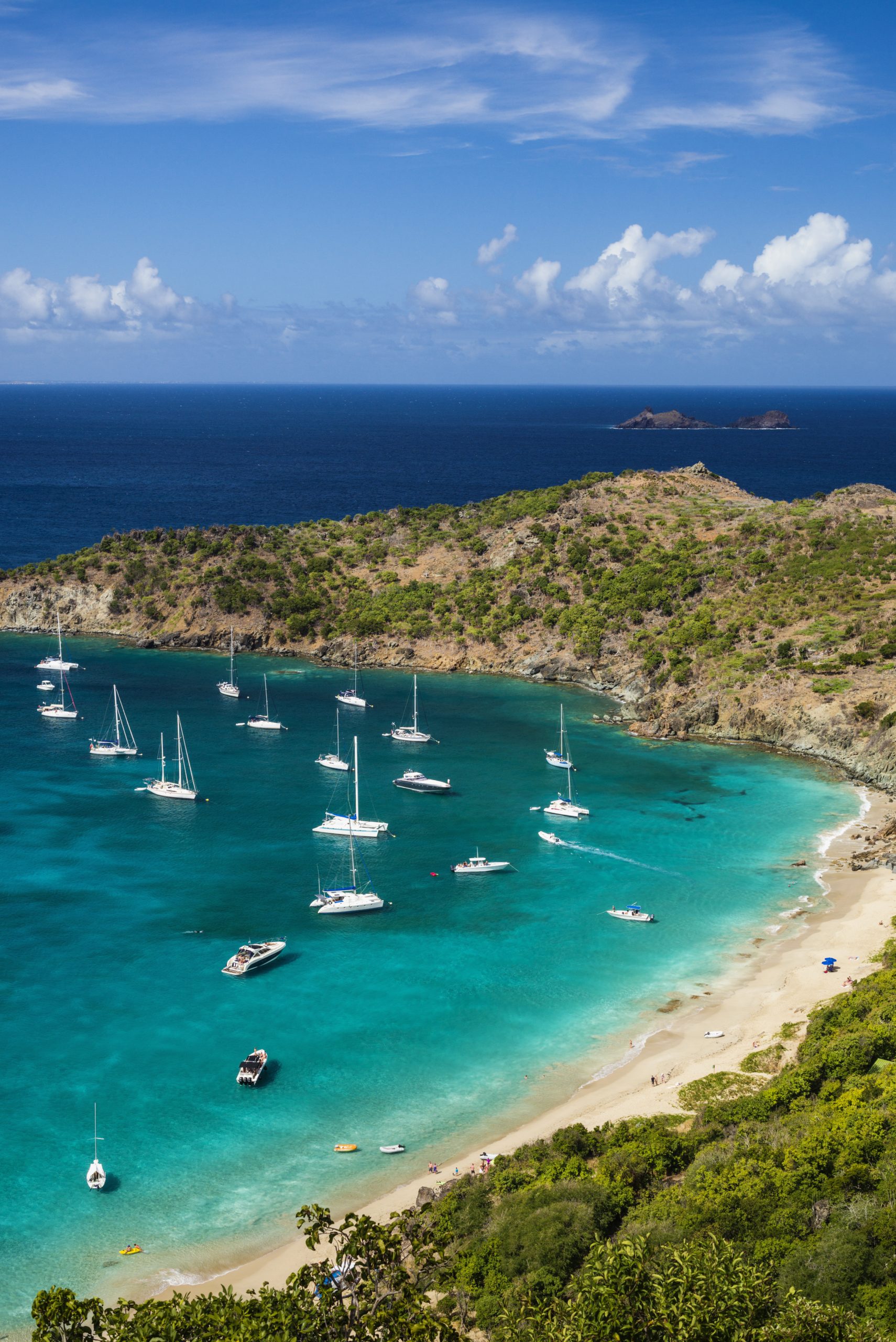
The beaches — Saline (wild and exposed to the sun), Shell (best sunset views), Colombier (above; only accessible by boat) and Gouverneur, to name but a few — are unbeatable. The latter, gloriously devoid of sun loungers, shops and restaurants; a narrow crescent of sand bordered by grassy fronds on one side. Apart from the obvious beauty, the only sign that we might be somewhere special was a modest gate halfway along the beach, which, it transpired, is (or perhaps was) Roman Abramovich's garden gate — his 70-acre, $90 million estate hidden entirely from view.
The island wasn’t permanently settled until it was ‘discovered’ by Christopher Columbus — who named it after his younger brother, Bartholomew — in the 15th century and colonised in the 17th century. However, crops refused to grow in the volcanic soil and, considered worthless, it was passed back and forth between France and Sweden in the ensuing years, finally settling with the former. Even today, it’s hard not to notice the island’s distinctive topography, flat plantation fields replaced by gnarled and craggy peaks, traversed at speed by gravity-defying Mini Mokes.
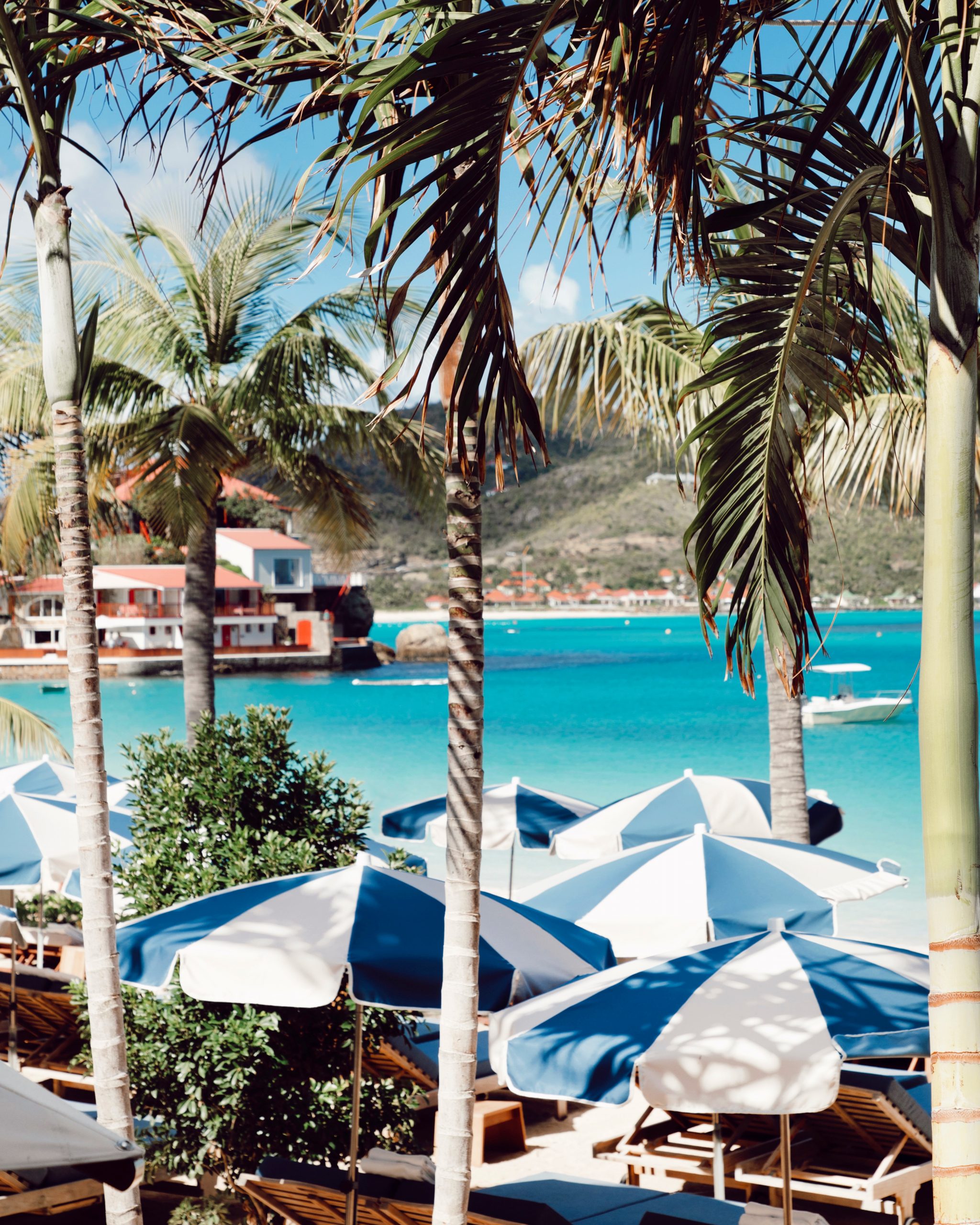
The eccentric and, by some accounts, mercurial Dutch aviator and artist Rémy de Haenen (1916–2008) opened up the island to tourism when he became the first person to successfully land a plane — in a sheep field, now the airport — more than 60 years ago. He built the island’s first hotel, the Eden Rock, in 1950, welcoming Howard Hughes, Greta Garbo, the Rockefellers and Rothschilds, and was subsequently elected mayor. Island-wide electricity finally arrived in the 1980s.
In the mid 1990s, de Haenen sold Eden Rock (below) to British hotelier David Matthews, who extended the property, confirming, in the process, its status as the glamorous hotel of choice of the fun and famous (Leonardo DiCaprio famously chose to invite everyone staying in the hotel to his private New Year’s Eve party in one of the beachside villas, over turning off the music). It’s no mean feat that the hotel emerged from the wreckage of Hurricane Irma in 2017 with its inescapable sense of joie de vivre still intact.
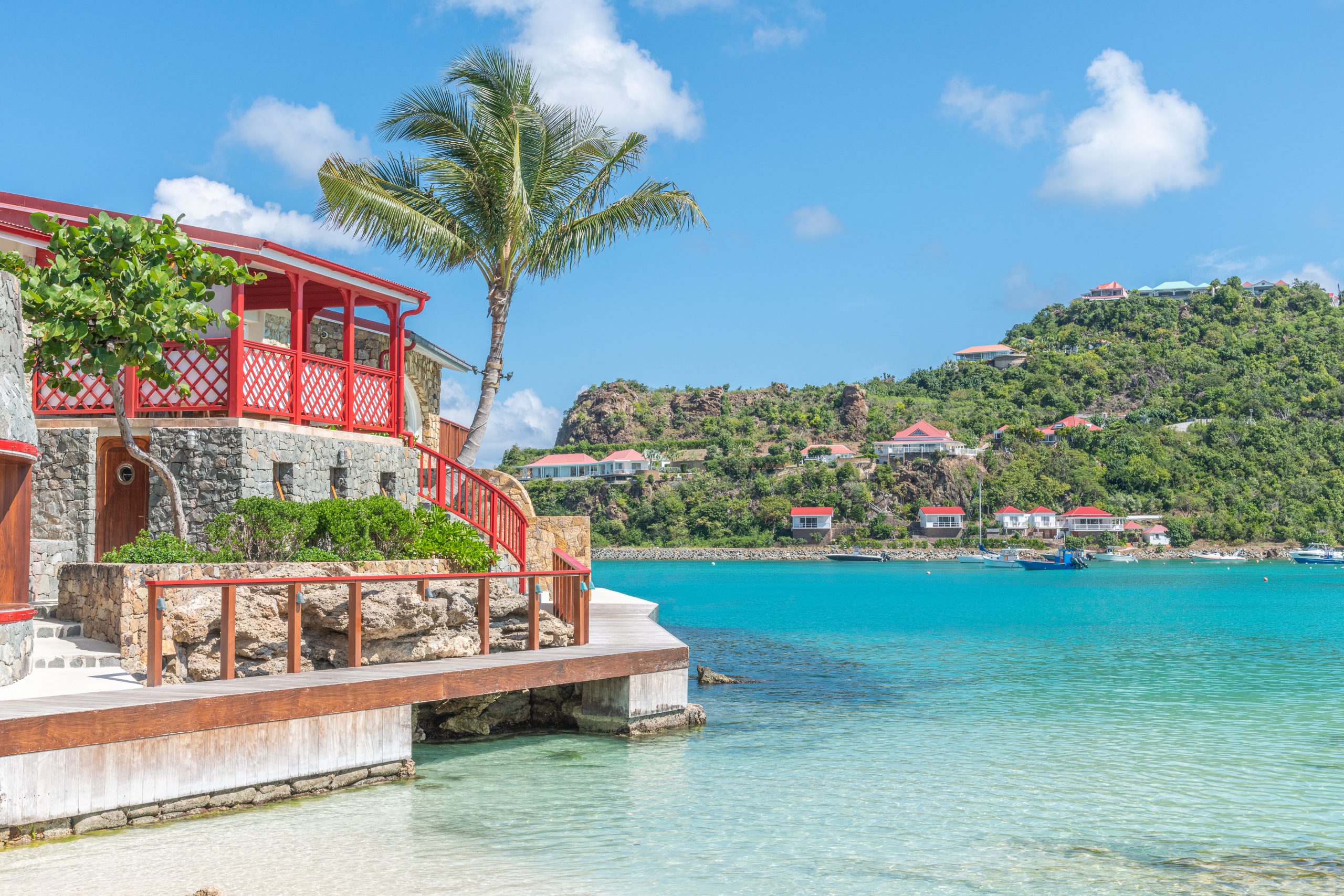
Eden Rock’s general manager, Fabrice Moizan, puts this down to the island’s strong sense of community, regaling us with tales of the category five storm’s aftermath — islanders coming together to clear roads and restore power at an estimated cost of £1 billion. The hotel was, to put it bluntly, destroyed (as were many others), only reopening to guests in 2019. There were whispers that the redesign was too corporate, that Eden Rock might have, after all of these years, lost its way. The genetically blessed and bronzed couples lying prone on the beach, frosé (frozen rosé) in hand, the well-dressed, salty-haired groups of friends, chatting away in fast-tongued French around their dinner table come 1am, not to mention Mr DiCaprio would likely disagree. None of those whispers came from the other hotels: they support one another, staff suggesting guests go for lunch, supper or a spa treatment at whichever takes their fancy. ‘There are no big resorts on St Barts,’ points out M. Moizan. When we venture into the red-roofed capital of Gustavia to eat at one of the island’s most celebrated restaurants, L’Isola, we learn that the owner derailed his own plans to open an ice-cream shop out of concern for a smaller, locally owned gelateria.
Exquisite houses, the beauty of Nature, and how to get the most from your life, straight to your inbox.

Cheval Blanc St-Barth Isle de France (above) on Flamands beach is another of the French collective’s hotels that has that hard-to-put-your-finger-on-it allure. Although less exposed than Eden Rock, at the bottom of a hill and cocooned by greenery, it, too, faced the wrath of Irma, but emerged from the chaos chicer than ever and the only hotel able to claim ‘palace’ status.
On our first morning there, we woke early and slipped straight onto Flamands beach and into the sea, keen to wash away the last dregs of jetlag. The sand drops away steeply; the water is smooth and viscous. If you wait long enough, suspended, the sun rises from behind the hotel, gradually bathing everything in mellow, morning light.

More than once, we came across someone who’d arrived on the island for a holiday and never left, including Jordana Gheler, a marketing whiz from Brazil. She guided us to a series of natural pools, a 30-minute scramble from Petit Cul de Sac beach, alongside her partner, French chef Apollon Delamotte. We talked about our favourite recipes to pass the time until suddenly there they were beneath us, still and deep. We swam in our shoes, keen to protect our toes from urchins; M. Delamotte, who has been swimming in the pools all his life, quickly shed his, aware of where each one hid.
We were introduced to Ms Gheler by Carrier, who masterminded our trip and itinerary as a whole. It's all part of the luxury tour operator's concierge service which operates on a sliding scale. At one end, they can organise standard services such as private ski instructors in The Alps and cookery classes with Michelin-starred chefs in Florence; at the other end they can magic private tours of the Colosseum and The Vatican, and marriage blessings in the Maldives. Without Carrier's help, we likely would've never met Ms Gheler, never toured her favourite shops and patisseries in Gustavia, or visited the first place she lived on the island. Corossol, a smaller village largely (for the time being) untouched by development. Many of the locals are taxi drivers. Drivers are required to carry a special document around with them, unique to the island, often handed down through familial generations. It’s possible to procure one of the documents without family ties, but they cost a lot of money.
In neighbouring Grand Cul de Sac, you’ll find Le Sereno, a hotel that, as its name suggests, is calm and serene — this is where people come to stay when they don’t want to be found or hassled. Italian influence is everywhere, from the pleasingly minimalist rooms (white, picture-less walls and sustainably sourced, dark-wood floors) to the restaurant’s Mediterranean fare. It’s the shallow lagoon — part of a marine reserve — that really takes your breath away, however. Guests are encouraged to venture out on kayaks or paddleboards in search of stingrays and such abundant numbers of turtles that staff won’t even blink an eye when you mention you spotted seven popping up for air in the space of 10 minutes.
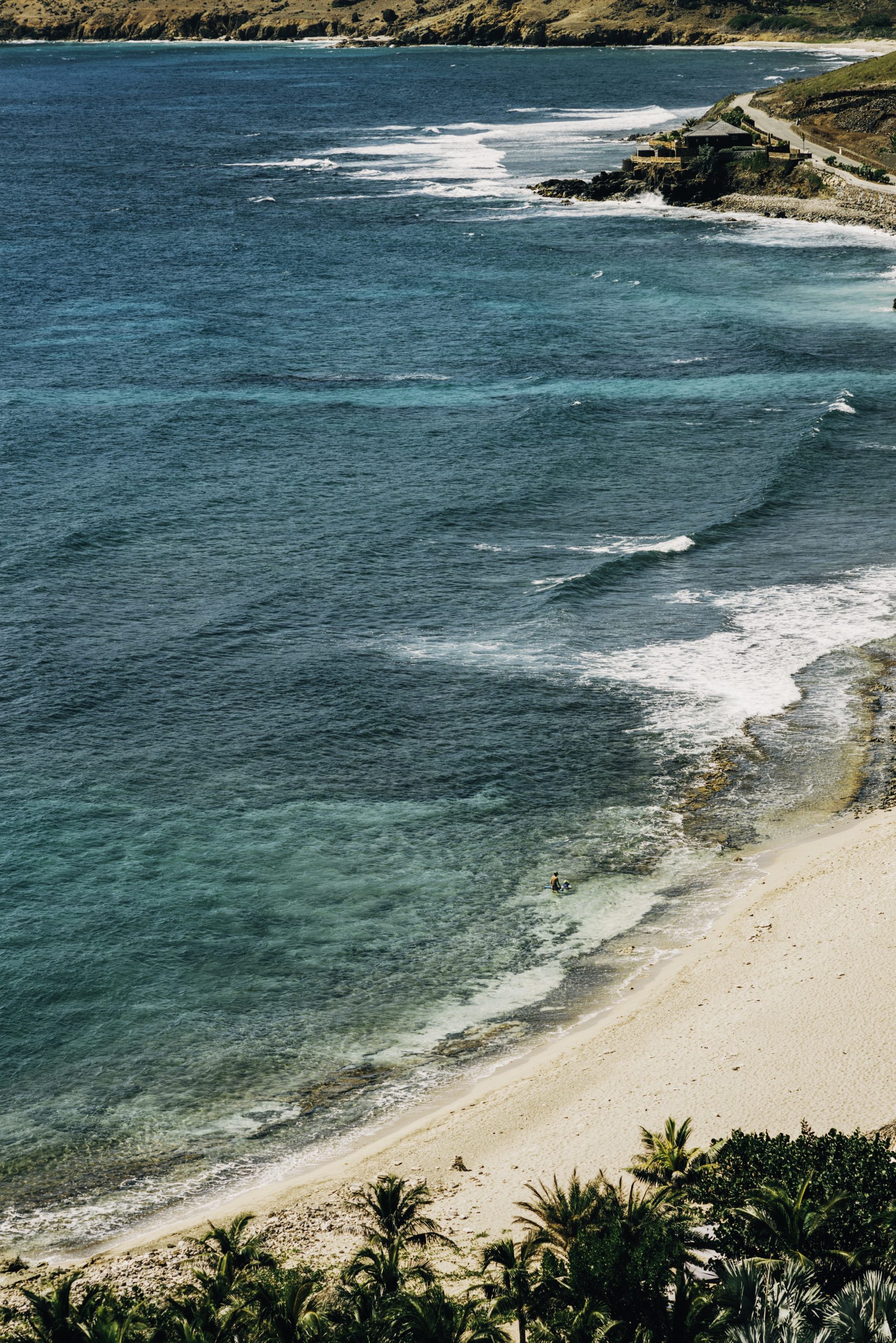
On another day, we embark on a hike around a length of the island’s eastern coastline with Aminata Clason-Diop, a health coach and yoga teacher. She is a paradigm of health and island living, gliding along the narrow, rocky paths that rise and drop relentlessly with no noticeable effort. We take it in turns to walk close behind and maintain conversation, swapping every few minutes to catch our breath.
Our unimpressive exertions come to an end when we stop to admire a tortoise, lumbering across the road in search of fresh water. Everyone is encouraged to move the animals out of harm’s way, as long as they’re relocated facing the same way.
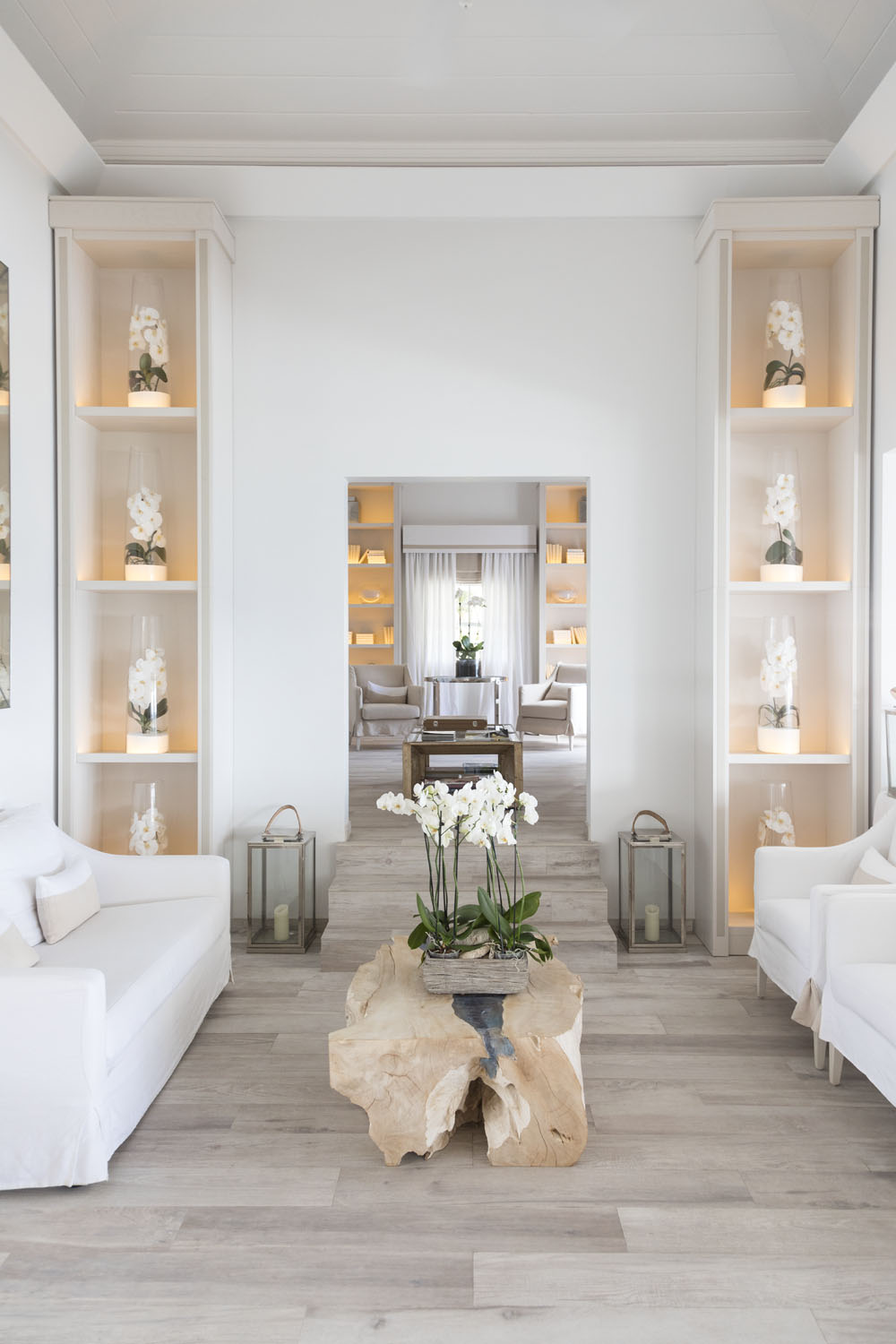
This particular hike overlooks another hotel, Le Toiny (above), comprising 22 whitewashed and clad villa suites. It’s easy-going — ‘If you’re not barefoot or wearing flip-flops, you’re overdressed’, says a sign — and the most British in style (the interiors were designed by Lady Bee Osborn). We make straight for the beach club restaurant — guests are ferried down from the hotel, along a potholed track, by vintage Land Rover — where we meet owners Mandie and Charles Vere Nicoll and their dachshund Gladys, who hides from the heat beneath a table. The couple are something of an institution: Charles was parish priest at the island’s Anglican church for 14 years and, before Le Toiny (currently the only independent, five-star hotel on the island), they ran Isle de France, now the Cheval Blanc.

This side of the island is more exposed to the Atlantic’s swells — so much that it earned the nickname Côte Sauvage — so we watch a group of surfers tackle waves that break over rocky sand. When we take to the water, our instructor is at pains to point out that I’d be much better if I stopped looking around all the time and actually got up onto my board. ‘Up, up, up’ he shouts from somewhere behind me. ‘Look at the sausage dogs playing on the beach,’ I say to no one in particular — still very much horizontal.
At a glance Rosie Paterson’s itinerary
Carrier offers 12 nights from £17,760 per person, based on two adults sharing an Ocean Room at Cheval Blanc. The price includes breakfast, return Club World flights from London Gatwick to Antigua with British Airways, fast-track airport service, return economy flights from Antigua to St Barts with Tradewind, private airport transfers and fast-track airport service (0161–492 1354). The other hotels are available on request including Eden Rock from €900 (about £782) a night, Le Sereno from £840 a night and Hotel Le Toiny from £772 a night, all on a bed and breakfast basis and excluding a 5% local tax.
Follow Rosie Paterson on Instagram @rosielkpaterson
Rosie is Country Life's Digital Content Director & Travel Editor. She joined the team in July 2014 — following a brief stint in the art world. In 2022, she edited the magazine's special Queen's Platinum Jubilee issue and coordinated Country Life's own 125 birthday celebrations. She has also been invited to judge a travel media award and chaired live discussions on the London property market, sustainability and luxury travel trends. Rosie studied Art History at university and, beyond Country Life, has written for Mr & Mrs Smith and The Gentleman's Journal, among others. The rest of the office likes to joke that she splits her time between Claridge’s, Devon and the Maldives.
